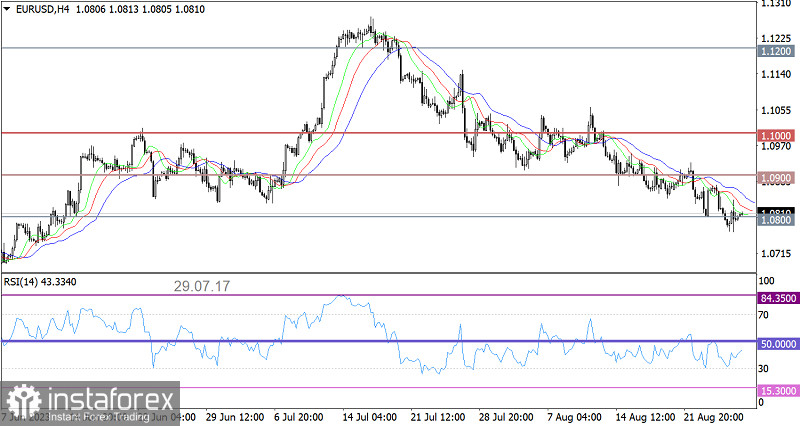Federal Reserve Chair Jerome Powell essentially confirmed what many had already suspected - the US central bank will continue to raise interest rates. Moreover, he also warned that they would remain high for quite some time. So, why didn't the dollar surge on the market? Firstly, Powell accompanied these statements with assurances that the Fed would pursue its monetary policy with utmost caution. In other words, there might be just one more rate hike. If the situation demands more hikes, there will be quite substantial gaps between them. Secondly, European Central Bank President Christine Lagarde generally made the same statement, thereby balancing out Powell's remarks. Hence, the market situation remains unchanged.

The EUR/USD pair broke through the support level of 1.0800, but it failed to sustain the new values. As a result, the volume of short positions decreased, leading to a price pullback.
On the four-hour chart, the RSI is moving in the lower area of the indicator, thus reflecting bearish sentiment among traders.
On the same time frame, the Alligator's MAs are headed downwards, which is consistent with the direction of the corrective cycle.
Outlook
Keeping the price below the 1.0800 level allows for subsequent growth in the volume of short positions. In this case, the pair may move towards the local low set in May. However, the ongoing pullback could be an initial signal for the end of the corrective cycle. For this reason, returning above the 1.0850 mark could gradually raise the volume of long positions for the euro.
The complex indicator analysis points to a pullback in the short-term and intraday periods.
 English
English 
 Русский
Русский Bahasa Indonesia
Bahasa Indonesia Bahasa Malay
Bahasa Malay ไทย
ไทย Español
Español Deutsch
Deutsch Български
Български Français
Français Tiếng Việt
Tiếng Việt 中文
中文 বাংলা
বাংলা हिन्दी
हिन्दी Čeština
Čeština Українська
Українська Română
Română

